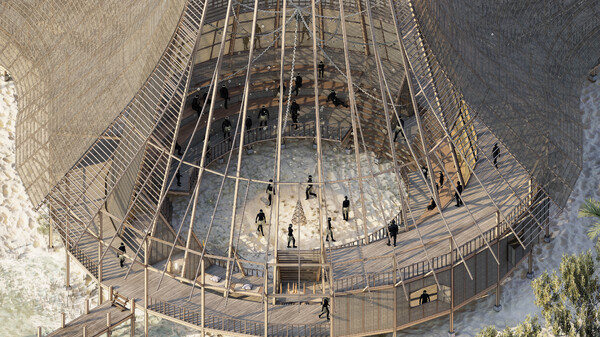Culture of Spectacle
The ‘spectacle of culture’ suggests that the ‘front stage’ displays of identity in cultural villages are presented as though they are ‘backstages’ of the experiences of culture, with the goal of meeting the expectations of external audiences, known as the tourist gaze. In meeting these expectations, the ‘front stage’ displays of identity are often sanitized and compromised to conform to tourists’ preconceived stereotypes of indigenous peoples as primitive or exotic.
On the contrary, the ‘culture of spectacle’ suggests that the elements of the ‘front stage’ culture are assimilated into the ‘backstage’ culture, which in turn shapes the way a community perceives and performs its own cultural identity. What was once ‘authentic’ is now an altered and diluted identity.
In the context of the existing Mah Meri Cultural Village in Malaysia, the Mah Meri people have appropriated their old traditions of storytelling, which once encrypted spiritual values, into staged performances devoid of their original, ‘authentic’ meanings due to decades of pressure from the tourist gaze. Therefore, the Mah Meri culture is regarded as a culture of spectacle.
Yet what if the tourist gaze were veiled? Would it change its voyeuristic nature into a respectful one? Would it allow the Mah Meri culture to be more authentic?
If so, how?
Can reimagining the spatial languages of the cultural village disrupt the colonial invention of this culture as merely a spectacle?
Culture of Spectacle builds on these questions by subverting colonial aesthetics of the existing cultural village and integrating a language of resistance into the layout of the cultural village as a process to reclaim and reproduce Mah Meri narratives. It also introduces a new indigenous TEK-nology (combining TEKs from two indigenous tribes) that serves as a testament to their territorial identity and challenges the perception of ‘backwardness’ of indigenous communities.


